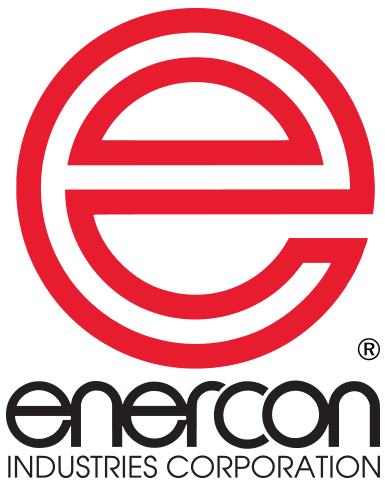More science and less art make printing operations more profitable.
Steve Utschig is a man of science. Not that he has anything against art. In fact, he helps people print works of art, but he knows a scientific approach to printing leads to repeatability. And repeatability breeds profitability.
His approach is well grounded and based on his 22 years of converting industry experience. As a Flexographic printing Instructor at Fox Valley Technical College (FVTC) he teaches press operators how to take control of their printing process.
When we caught up with Steve at FVTC and took the opportunity to explore some of the key issues facing flexographic printers.
Enercon: What is the most common cause of down-time and waste on a printing press?
Steve: It’s the lack of preparation that goes into the job, based for the most part on the lack of understanding of how the flexographic printing process works.
Enercon: How do you control the process?
Steve: First you need to recognize the variables and determine which are within your control. There are too many interactions to control 100% of the variables, but with a scientific approach you can efficiently produce print jobs that are profitable and repeatable.
Enercon: What constitutes a scientific approach?
Steve: Knowing why you’re doing something is critical. I’ll ask a press operator why he did something and too many times I hear “because it works” or “that’s the way we do things here.” That’s not an acceptable answer.
A scientific approach is grounded in understanding cause and effect. In order to do that you need to maintain a historical record of press jobs. It serves as a reference and it’s invaluable when it comes to troubleshooting a job in the future. So whether it’s first shift or third shift you can expect the results to be consistent.
Enercon: How do you properly set-up a job?
Steve: First, always review the job history or jacket to see if there were any idiosyncrasies when you’ve run the job in the past. There may be details you have forgotten or even another operator’s notes that might tip you off to a potential problem.
The other way to prevent avoidable problems is to make sure to do a pre-flight check. It’s an important step that, along with proper press maintenance, pays long-term dividends.
Enercon: Is ink control often overlooked?
Steve: Not only overlooked, but also misunderstood. Most printers don’t use or get enough information from ink suppliers about the ink systems they use. Controlling the ink’s recommended viscosity and pH levels for water based printing, and solvent blends for alcohol-based printing is critical.
And you can’t mix and match ink systems and predict the outcomes. Each ink system has certain additive mix requirements based on its resin blend to perform, whether it be scuff resistance, heat resistance, etc. Measuring and documenting are critical. Concocting a “witch’s brew” without guidelines and documentation yields unrepeatable results.
Of course, once the ink is under control you also have to make sure your substrate is under control.
Enercon: How do you control the substrate?
Steve: Whether you’re using water or solvent based printing you want to ensure the surface energy of the substrate is as consistent as possible. The best way to guarantee ink adhesion consistency is with a corona treater.
Enercon: Do many solvent printers reject the idea of treatment.
Steve: If there are printers who think that, then they should possibly reconsider their thinking. Films are pretreated, but they’re not guaranteed to be perfect when it comes time to print. Treatment degrades over time so that’s one issue you have to contend with. Even if the film makes the grade on a dyne test you still have the possibility of additives rising to the surface. These surface imperfections can result in pinholing and other quality issues. A corona treater can help to eliminate these problems.
Enercon: So you would always have a treater on your press?
Steve: Absolutely. For the price and quality assurance they give you they’re a great value. besides it only takes one or two rejected jobs or quality issues to justify the cost of a treater. Whether I had a water or solvent based press operation I’d have a corona treater on it.
Enercon: If the ink and substrate are under control what are the keys to setting up the press?
Steve: “If you’ve already reviewed the job jacket or history than you can start the make ready process. Mounting the plate correctly onto the cylinder is key. If you can also proof the job in the mounting room you can possibly save costly downtime on the press.”
Enercon: What’s the best way to ensure optimal print settings?
Steve: “This is a step by step process involving both the anilox to plate (ink setting) and the plate to substrate (impression setting) pressures. The first thing to do is achieve full print on the substrate. Then pull back on the ink setting until the print disappears. Next, add pressure until you have a full print again, identifying the highs and lows. When the minimum pressure is applied to again achieve full print then do the same operation for the impression setting.”
Enercon: What’s the most common mistake during this process?
Steve: “During the set-up process the most common error is not making sure the anilox roll, the cylinder and the substrate are properly aligned. This is called achieving parallelism. If you don’t take the time to do this you’ll won’t have even pressure. Without even pressure you could see haloing or other objectionable and unacceptable print results.
Enercon: Is there ever a good reason to use more than the minimum ink setting?
Steve: “Absolutely not. If the ink setting is heavy dirty printing will be the result. This could be interpreted as the ink drying too fast. Trying a chemical fix such as using glycol would be the absolute wrong thing to do in most cases.”
Enercon: Steve, you’ve shared a lot of useful insight with our readers. Can you summarize some of your thoughts for us?
Steve: “An understanding of the flexo process is critical. This printing method has many variables that continually interact to either make or break a press run. The key to successful press operations is to apply your knowledge of how the process works with documentation and communication.


